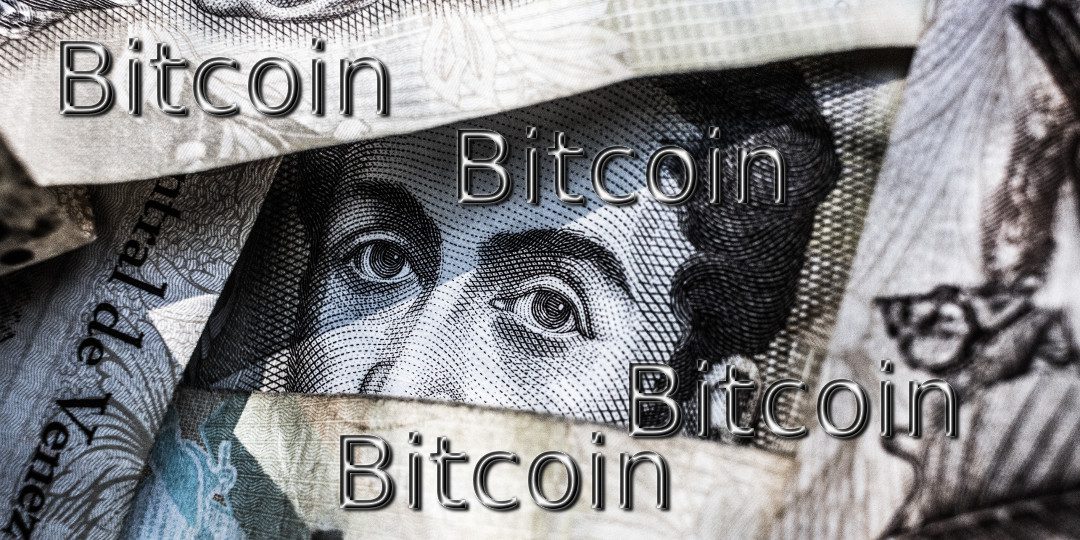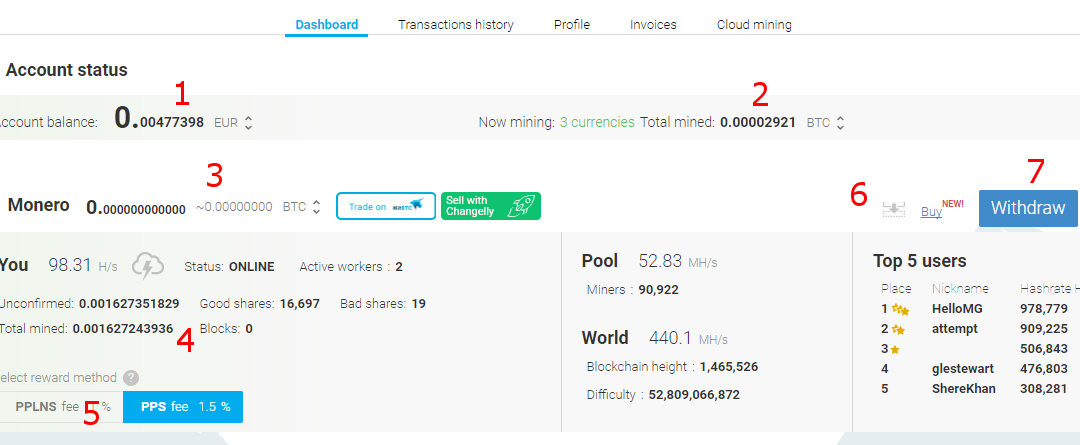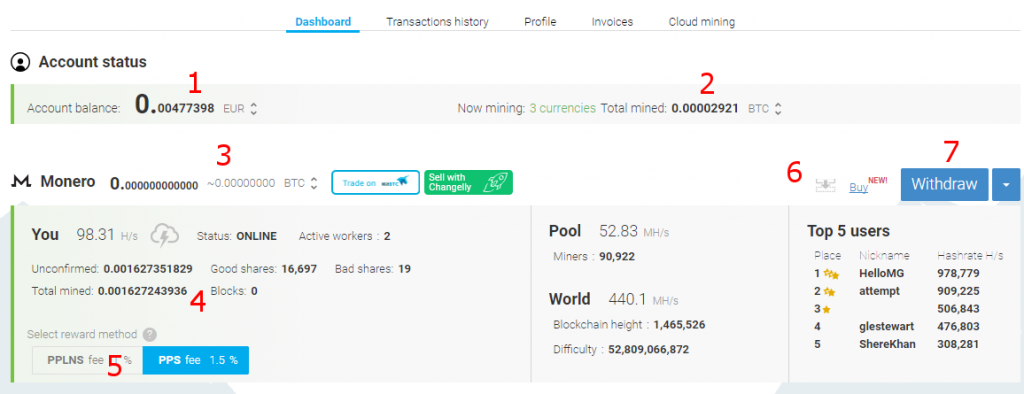
Beginner’s Guide to Bitcoin and Cryptocurrency
It’s practically impossible to ignore Bitcoin and Cryptocurrency lately with the media touting as the largest bubble in the history of the world…even bigger than tulip mania!!! But finding hard facts can be difficult. When you look on Facebook, Youtube, and Google, it seems that 90% of the content is trying to sell you on some kind of get rich quick scheme.
So this little (okay probably not so little) article distills the basics right down to earth in a language that everybody here can easily understand.
So what exactly is a Bitcoin?
At its core, Bitcoin is a distributed ledger system. Thousands of computers all over the world keep a copy of the ledger, which makes it extremely difficult to counterfeit. This distributed ledger system technology is known as the Blockchain. “Owning Bitcoin” is basically owning the ledger entry. In order to record new transactions into the ledger, computers have to solve very difficult math problems.; this is called mining.
As their reward miners get a small percentage of transactions. Addionally mining will occasionally result in a new Bitcoin being discovered. The math is set up in such as way that the problems become progressively harder so that there will be that there will only be 21 million bitcoin ever created/discovered. Early on, it was relatively easy to mine them, and individual miners could mine multiple bitcoin. Now the math is so complicated that most mining is done in “pools” with multiple miners sharing the resulting Bitcoin.
21 million doesn’t seem like it’s enough.
Luckily Bitcoin is fractional, which means that you can own as little as 0.00000001 Bitcoin. (Just like you can own one dollar, or 0.01 dollars (aka a penny).
Where does Bitcoin get its value?
Like all economic questions, the answer is both simple and complicated. I’ll keep this short and dedicate an entire article to it later. The simple answer is supply and demand. As seen above, there’s a limited supply. So where does the demand come from? Well, Bitcoin is useful for keeping track of who owns it, and it can’t be artificially inflated like a traditional government-issued fiat currency (dollars, Pesos, Cruzeiros). Bitcoin set out to be a better and more secure currency than traditional government-issued money.
If you think about your bank account and credit cards, dollars for the most part today are just computer entries of who owns them or who owes them. The problem is that nothing prevents the government or Federal Reserve from just creating additional electronic entries out of thin air. In fact, this is how the banks were bailed out in the 2008 Financial Crisis. Let’s hear it right from the head of Federal Reserve (at the time) Ben Bernanke:
The U.S. dollar has lost 95% of its purchasing power over the last hundred years due to money creation by the government, and it’s considered a bastion of stability compared to the Thai Baht, Mexican Peso, Argentine Peso, Brazsilan Cruzeiro…uh Cruzado…uh New Cruzeiro…uh…Real. You see the point. The demand isn’t just from Americans; the demand is international, partly as a hedge against inflation, and partly as a way to get your money across borders. Bitcoin can be sent anywhere in the world in a matter of minutes.
But isn’t Bitcoin a bubble?
Yes and no. The spike in demand is creating interest that in turn fuels additional demand as speculation. But there are so few bitcoin in the world compared to the number of people who may want them, that it’s hard to say what will happen in the long term. My best guess is that Bitcoin has a long way to go up before it comes down. There will be dips and corrections along the way to be sure, but unless Bitcoin is hacked (unlikely given its nature and track record) or the development team does something really stupid, chances are good that it will remain a valuable commodity for a while. There are some issues with Bitcoin that may limit its ability to be used for every day transactions (see below), but I think that it will still be used for larger transactions and wealth transfers.
Ultimately, the “bubble” exposure is good for Bitcoin and other Cryptocurrencies as the news coverage exposes people to them (and impells me to write articles like this). The more people know about it and own it, the more likely people are to begin using them for transactions, which will turn stabilize the pricing and preventing a future crash.
So what’s a Cryptocurrency?
Let’s sum up first. Bitcoins are ownership of ledger entries in a distributed blockchain. The process of discovering new ledger blocks and verifying new entries for existing blocks is called mining and based on solving complicated math problems. So…those really hard math problems? They’re based on codebreaking, aka Cyrptography.
Bitcoin was the first “currency” to use blockchain technology. There have been several others that are based directly off Bitcoin or developed their own similar (but different) approaches. Collectively these are call Cryptocurrency. Because it’s the oldest and most well-known, it’s become the de facto standard, and all the others are called alt-coins.
Some of the alt-coins are just competitors to Bitcoin that seek to eventually become the most used by addressing problems that bitcoin has. Others just hope for a piece of the action. And some are trying to do something completely different such as become a way to track real estate deeds or educational transcripts or which websites are most trusted.
Some of the most popular alt-coins include:
- Litecoin: is essentially bitcoin 2.0. It was designed to be a faster, cheaper Bitcoin. It’s probably technologically superior in every way. It currently serves as a testing ground for Bitcoin development. The Bitcoin developers can see how a proposed solution to a problem plays out in the real world before deciding whether to incorporate it into Bitcoin.
- Ethereum is actually a blockchain development platform. It’s main purpose is to serve as a base for potential applications of blockchain to do interesting things.
- Dash is designed to be a cheap, fast, and anonymous (if desired) currency for making transactions. The Dash team is heavily marketing themselves. They’ve been targeting the medical marijuana community, since many banks will not do business with them.
- Zcash is supposed to be a cheap, fast alternative to Bitcoin.
- Monero emphasizes complete anonymity.
You keep saying cheaper and faster. What do you mean by that?
Remember that miners get a fee for verifying transactions (new ledger entries). In Bitcoin, new entries are recorded every ten minutes. To be confirmed, you need at least two separate blocks to show your entry (to prevent double spending of the same Bitcoin). This means that it takes about 20 minutes to get confirmation of a transaction. That doesn’t really work for instant transactions like paying for a cup of coffee, but it’s a heck of a lot better than waiting three hours for a wire transfer or 3-5 days for an electronic funds transfer (EFT).
Furthermore, each block can only record so much information, which means that your transaction may not be recorded in the next block at all. To ensure faster processing, you can offer a larger mining fee. Alt-coins that want to be cheaper and faster have different ways of addressing these two big problems with Bitcoin.
Many people predict that as a result of these issues, eventually Bitcoin will become used as a store of larger wealth, while another alt-coin will be used more for daily transactions.
Stick a fork in it.
When a proposed change to Bitcoin or another Alt-coin is disputed, sometimes the coin will fork. This means that it becomes two separate coins with two separate block chains. As an example, recently there was a dispute over the way to solve some of the issues listed above. So some of the Bitcoin developers forked the Bitcoin project, and called their new coin Bitcoin Cash. When this type of fork happens, if you own some bitcoin, you end up owning your original Bitcoin and the new coin too, so don’t fear the fork.
Okay, so how do I get my mitts on some Bitcoin?
There are essentially three (and a half) ways to obtain Bitcoin. (These will apply to pretty much all of the alt-coins to some degree).
The first is to mine it as described above. (The half is to mine another cryptocurrency and then exchange it for Bitcoin). I have a tutorial on how to get started mining the easy way, so if this interests you, then click here for the tutorial.
The second is to take Bitcoin (or other cryptocurrency) as payment for goods and services. This is actually remarkably easy. Bitcoin is probably best used for someone you know and trust, because of the speed of transaction issue. Another coin that is faster would probably be better for a one-off transaction like buying something off Craigslist. It’s as simple as having a QR code that the person paying scans, enters the amount, and presses send. Even easier than Venmo. Use Google to find local groups. For example, in West Palm Beach, there are number of Bitcon Meetups.
The third way to obtain Bitcoin is to buy it with dollars. The easiest way to do this is with Coinbase. Coinbase is criticized in the Cryptocurrency community (sometimes unfairly, see below), but it’s still the easiest on-ramp to Cryptocurrencies. You sign up for an account, and then you can buy Bitcoin, Litecoin, or Ethereum with either a credit card or electronic fund transfer from your bank. Once you own some coin, transfer it to your own wallet (see below).
Tell me what’s wrong with Coinbase?
The unfair complaints have to do with privacy as Coinbase complies with IRS regulations that govern financial institutions. That’s what allows them to take dollars in the first place.
Other complaints include that it’s relatively slow and the fees are higher than other services. This is somewhat true, but it’s still the easiest way to acquire some Bitcoin.
Finally, the Bitcoins held in Coinbase are not actually held by you. They are held by Coinbase on your behalf. So if something happens to Coinbase, it’s possible that someone could abscond with your bitcoin, but it’s certainly no less secure than Equifax or Target.
One last complaint is that their website “keeps breaking.” This is primarily due to the overwhelming increase in demand in recent days. They are working to try and resolve these issues as quickly as they can.
Recommendations for dealing with Coinbase (and pretty much any online exchange)
- Use my link to sign up. Once you buy $100 worth of any coin, we’ll both get $10 of Bitcoin.
- Enable two-factor authentication. (When you sign in, they will require verification that it’s you via your phone.)
- When you place your order, the price is locked in even though it takes about 5 days for electronic funds transfers to process.
- Once your funds have cleared, transfer your coins to your own private Bitcoin wallet.
What’s this about a wallet?
Bitcoin is “owned” by being recorded to a particular Bitcoin address (series of letters and numbers). A Bitcoin wallet generates an address (or multiple addresses) and calculates how much bitcoin is recorded to each address to generate a spendable balance. When you pay someone, your wallet authorizes the transaction.
The magic is contained in a pair of keys, called public and private keys. The private key verifies that the transaction is being generated by the rightful owner of the address. As such, you need to guard your keys. If someone has access to them, they have access to your bitcoin. If you lose them, then you lose your bitcoin!!!
I can lose my Bitcoin? This doesn’t sound very secure.
Well, it’s certainly not idiot proof. But it’s not all that insecure as long as you’re careful. Your wallet will generate a seed, a code or series of words that can be used to regenerate the private key. For the love of God, protect this code. That way, if you lose your phone, or someone throws you in the pool, the bitcoin stored in your phone’s wallet won’t be lost.
One other thing to be aware of is that if you’re dealing with multiple currencies, don’t send the wrong currency to the wrong. For example, if you send litecoin to a bitcoin address, there’s a good chance that they’ll be lost, possibly forever.
Wallet Practices
Choose a secure wallet, such as an offline wallet to store the majority of your Bitcoin. Then transfer a little bit to an online wallet (whether your phone or computer) for walking around money. If you practice this protocol, if you do ever lose your online wallet or have your computer hacked, you might lose the small amount stored there, but you won’t lose your savings.
The most secure wallets are called hardware wallets. They are typically a USB device that runs the wallet software and authorizes transactions. Since the private key is stored in the device, when it’s unplugged there is no chance that anyone can electronically still your Bitcoin. Make sure you configure a passphrase for the hardware wallet to prevent someone who finds your hardware wallet after if fell out of your wallet from taking your bitcoin. Keep the seed separate from the. The Ledger Nano S seems to be the most popular hardware wallet at this time. The Trezor is never in stock and is a bit more expensive. The Keepkey is another alternative.
You don’t need a hardware wallet, so don’t let that stop you from getting started. You can also create a paper wallet for free.
You need a wallet for each currency you want to own.
Some wallets are called Multi-Wallets because they can handle multiple crytpocurrencies. Others are specific to a single type of coin. Before you buy a hardware wallet, make sure that it can handle the currencies you want to use.
Two popular software multi-wallets are Jaxx and Exodus. Jaxx can be used on your phone and computer. There are some security concerns with the way that it stores your private key, so don’t go doing stupid things like getting a virus, and see Wallet Practices above. One of the nice things about the Jaxx wallet is that it integrates Shapeshift, which is an exchange for Cryptocurrencies. So say, you have Litecoin in your wallet, but the person you’re buying from wants Dash. The Jaxx wallet can convert it for you via Shapeshift, and then send the Dash. Exodus also integrates with Shapeshift, but is not available for phone and tablets.
Bottom line: Take Action Now
I’ve know about Bitcoin for at least 7 years. I kept thinking, you know, I should figure this stuff out and buy some…maybe $500. If I had done that back in 2010 or 2011, or 2012, I’d be a millionaire. If I had even done it in early 2017, my $500 would now be worth about $8000. It was the inertia and learning curve that did me in.
I don’t know what the future holds specifically, but I can tell you that blockchain technology is going to revolutionize the way we do business and make purchases. Chances are very good that Bitcoin will continue to rise in value along with some other alt-coins.
It’s not too late. There’s still a lot of up Bitcoin before there’s a down. But don’t be stupid. Start small. Learn how it works. Become familiar with the issues. Then you’ll be prepared for what comes.
So, here’s your homework:
- Follow my Minergate Quick Tutorial, and you can be mining cryptocurrency in about three minutes.
- Start a Coinbase account and buy a small amount of crytpcurrency (Bitcoin or Litecoin). Whatever you’re comfortable with, whether it’s $5 or $500.
- Create a wallet
- Transfer your coin to the wallet
- Buy something from overstock.com with bitcoin.
- Create a paper wallet.
- Send a $1 dollar to it.
- Destroy or lose it.
- Use the seed to recreate it.
- Go out to lunch with a friend. Have them pay in dollars and you pay them in Bitcoin.
- Use Google to find other local people who use Bitcoin.
Once you’ve done these things, now you’re ready to snatch the rock from my hand and go out into the world. In my next article I’ll lay out some investment and speculation strategies as well as share some resources for learning more.



Recent Comments